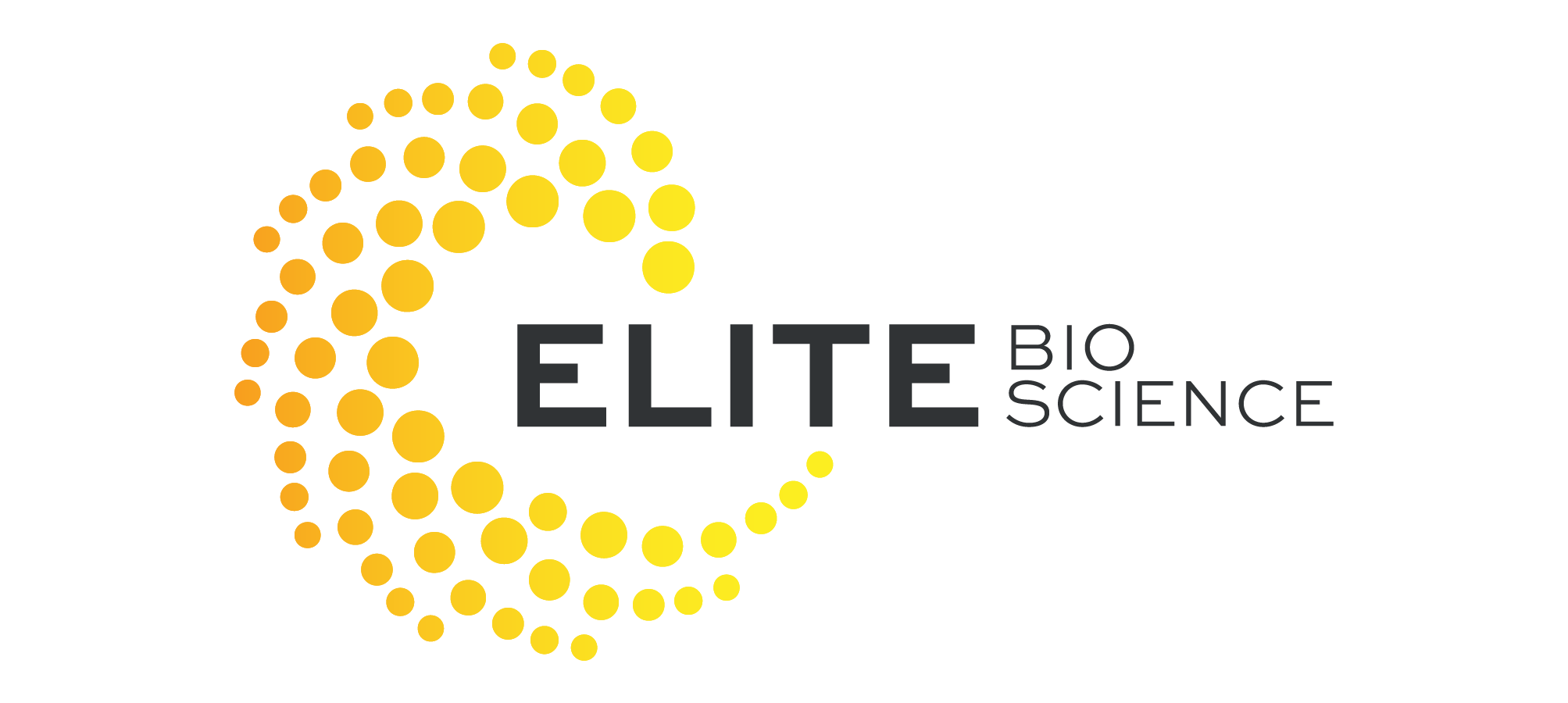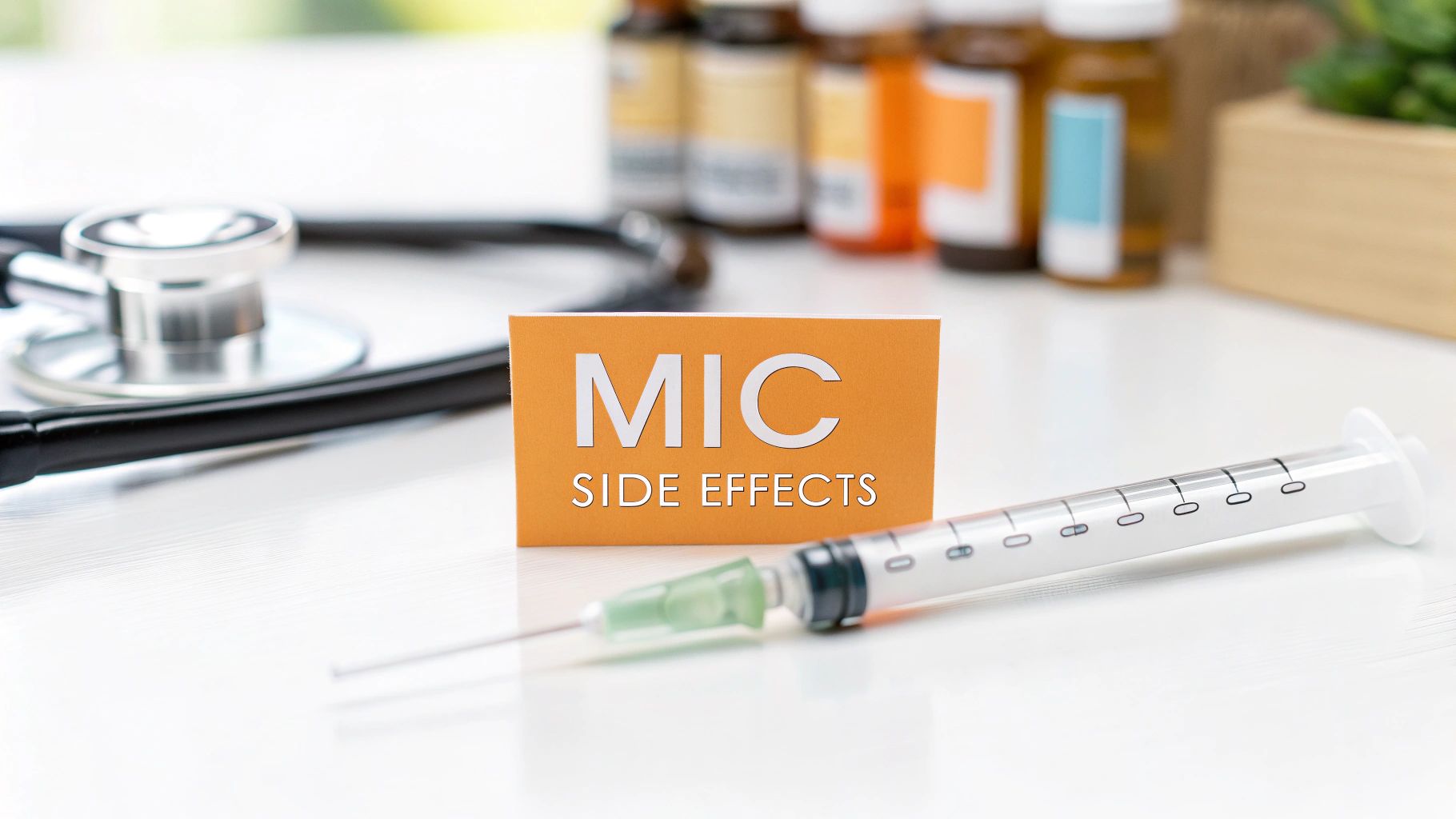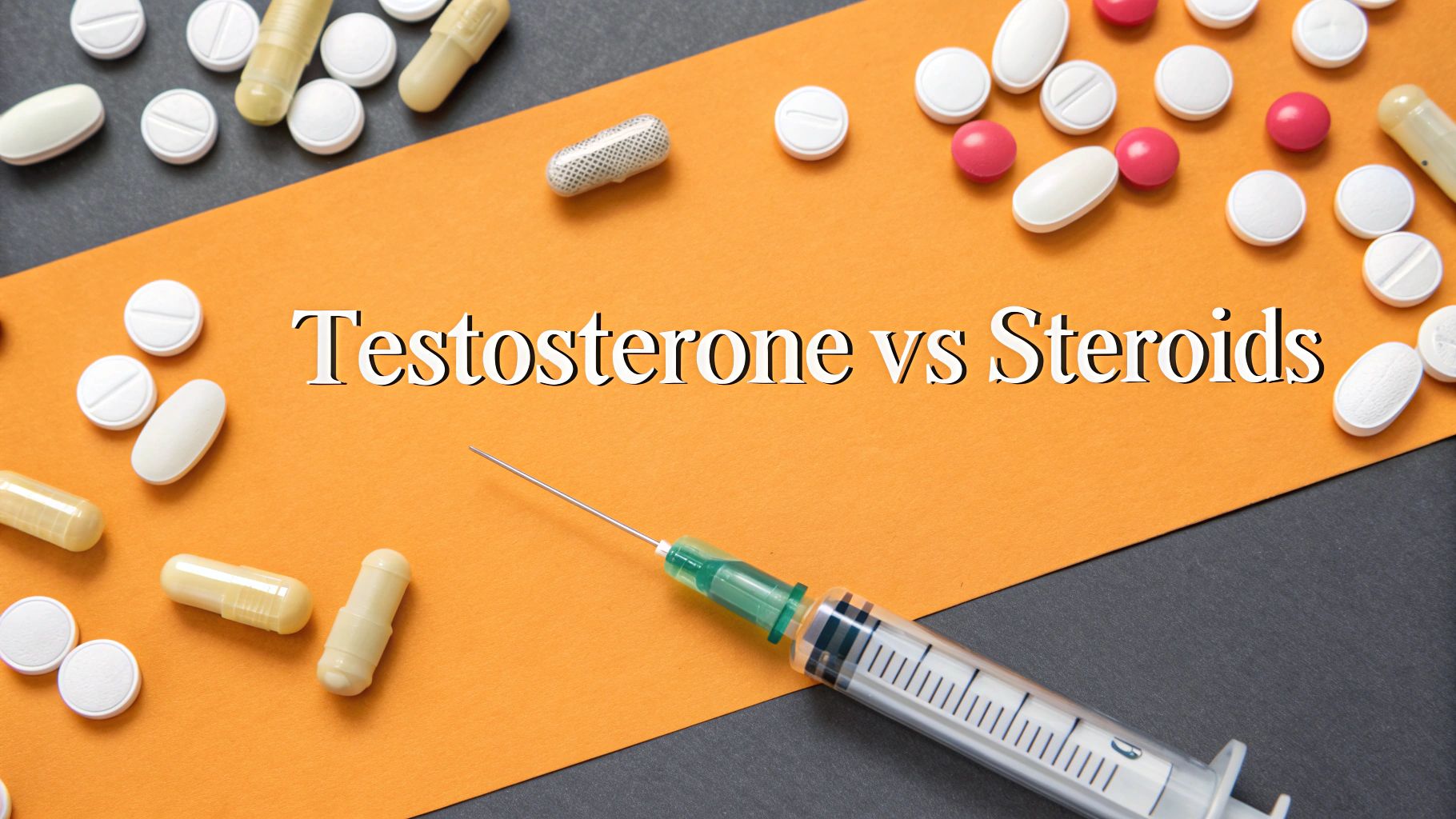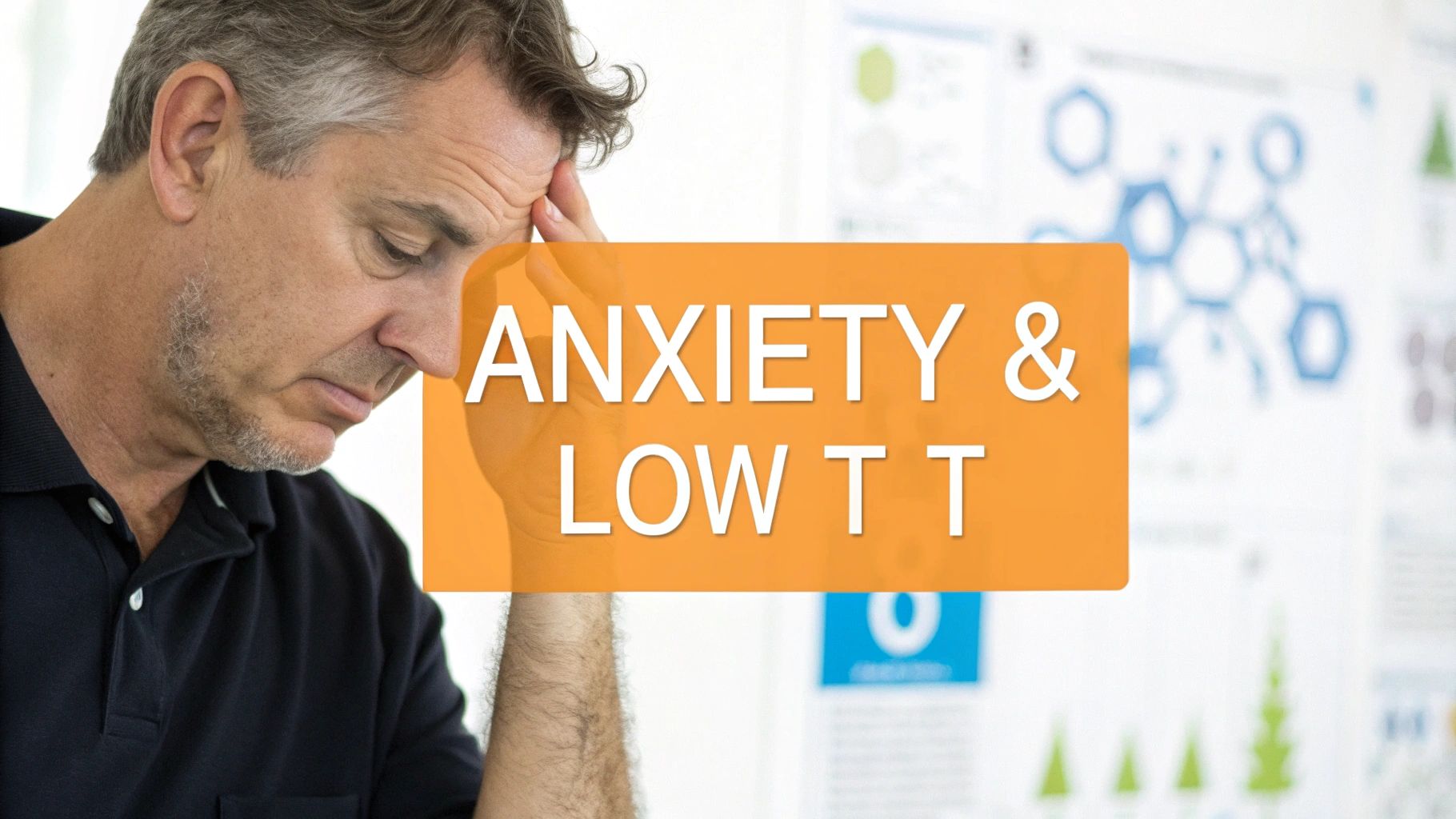A Guide to Estrogen Replacement Therapy Options
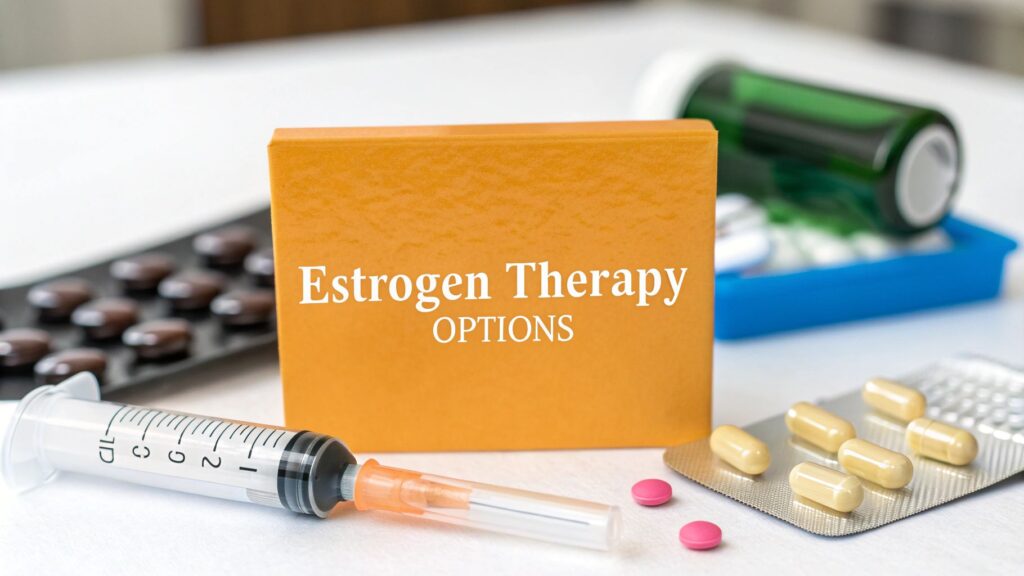
Choosing the right estrogen replacement therapy is a huge step in managing menopause, and your options are broader than ever. We're talking everything from oral pills and transdermal patches to topical gels, creams, and vaginal rings. Each method comes with its own set of benefits and things to consider, which is why this decision is so personal. It really comes down to your specific symptoms, your overall health, and what fits best into your daily life.

Understanding Your Estrogen Therapy Choices
Figuring out the world of estrogen therapy means getting past the medical jargon to understand how each option actually works for you. This isn't just about chasing symptom relief; it's about finding a solution that feels comfortable, sustainable, and effective for the long haul.
A great therapy plan starts with knowing exactly where your body stands, which is why baseline testing is so important. Comprehensive evaluations like the DUTCH hormone test can give you a crystal-clear picture of your hormonal health, providing a solid foundation for any treatment.
Think of this guide as your cheat sheet for having a confident, informed conversation with your doctor. Below is a quick breakdown of the main estrogen replacement therapies available today.
| Therapy Type | Delivery Method | Best For | Key Differentiator |
|---|---|---|---|
| Oral Pills | Taken by mouth daily | Women who prefer a simple, traditional method for treating systemic symptoms like hot flashes. | It's processed by the liver first (first-pass metabolism), which can impact clotting factors and triglycerides. |
| Transdermal Patch | Applied to the skin weekly/bi-weekly | Anyone looking for consistent, steady hormone delivery without the hassle of a daily pill. | It bypasses the liver entirely, which may lower some of the risks linked to oral estrogen. |
| Topical Gels/Creams | Applied to the skin daily | Those who want flexible daily dosing and a method that also avoids the liver. | Application requires care to prevent the gel from transferring to partners, children, or pets through skin contact. |
| Vaginal Methods | Rings, creams, or tablets | Women needing to treat localized symptoms like vaginal dryness with very little systemic absorption. | It targets the specific area of concern without affecting hormone levels throughout the entire body. |
Systemic vs. Localized Estrogen: How They Work

Before diving into the specific types of estrogen replacement therapy, it’s crucial to understand one core concept: the difference between systemic and localized treatment. This isn't just a minor detail—it’s the most important factor in figuring out the right approach for your unique symptoms and health goals.
Systemic therapies are designed to work throughout your entire body. When you apply a patch, use a gel, or swallow a pill, estrogen enters your bloodstream and circulates everywhere. This makes it a powerful solution for the widespread symptoms of menopause.
Understanding Systemic Delivery
Systemic estrogen is the go-to choice when you need comprehensive relief from issues caused by a body-wide drop in hormone levels. It's the standard for tackling the most disruptive symptoms of menopause, including:
- Hot flashes and night sweats (vasomotor symptoms)
- Brain fog and other cognitive changes
- Mood swings and irritability
- Prevention of osteoporosis (bone density loss)
Think of systemic therapy as a central heating system for your house. It raises the temperature everywhere, not just in one room, bringing your whole body back into balance with a consistent level of hormones. This broad approach is why ERT is such a cornerstone of menopause care. In fact, by 2025, estrogen therapies are projected to make up about 38.9% of the global hormone replacement market, a sector valued at nearly USD 19 billion.
Pinpointing with Localized Therapy
In contrast, localized therapy is all about targeted relief. Products like vaginal creams, suppositories, or low-dose rings deliver a small amount of estrogen directly to the affected tissue. This method is perfect when your main concerns are the genitourinary symptoms of menopause (GSM).
Localized estrogen works precisely where it's needed most, with minimal absorption into the rest of the body. This targeted action makes it an excellent choice for women whose main complaints are vaginal dryness, itching, or pain during intercourse, without the need for full-body hormonal adjustment.
Because it acts locally, this method generally won't help with systemic issues like hot flashes or bone loss. The choice between systemic and localized really comes down to what symptoms are bothering you the most. Many women find it helpful to explore different options, including those in the bioidentical space. To get a better grasp on this, you might want to read our detailed guide on https://elitebioscience.co/what-is-bioidentical-hormone-therapy/.
Comparing Your Estrogen Therapy Delivery Options
Choosing the right estrogen replacement therapy isn't just about managing symptoms; it's about finding a delivery method that fits your body, your lifestyle, and your personal comfort. One woman might find the routine of a daily pill simple and effective, while another might prefer the freedom of a weekly patch. Let's dig into the most common delivery systems to see how they stack up in the real world.
Each method interacts with your body in a unique way, especially when it comes to how the estrogen is absorbed and processed. This is a critical factor that shapes not just the therapy's effectiveness but also its potential risk profile.
Oral Estrogen Pills A Traditional Approach
When most people think of hormone therapy, the daily pill is what comes to mind. It’s a straightforward method that has been used for decades to provide systemic relief from disruptive symptoms like hot flashes and night sweats.
But here’s the catch: when you swallow an estrogen pill, it travels through your digestive system and gets processed by your liver before it ever reaches your bloodstream. This "first-pass metabolism" can alter liver proteins and ramp up the production of clotting factors. This is the primary reason oral estrogen has been linked to a slightly higher risk of blood clots compared to other methods—a crucial point for anyone with a history of cardiovascular concerns.
Transdermal Patches Steady and Consistent Delivery
For those who want a "set it and forget it" approach, transdermal patches are a fantastic option. These thin, adhesive patches are usually applied to the lower abdomen or buttocks just once or twice a week, depending on the specific brand.
The biggest advantage of the patch is its ability to deliver a continuous, low dose of estrogen directly into your bloodstream right through the skin. This route completely bypasses the liver, which research suggests may lower the risk of blood clots tied to oral forms. That steady, consistent hormone release also helps you avoid the daily hormonal peaks and valleys that can sometimes happen with pills, leading to much more stable symptom control.
A key differentiator for transdermal methods like patches and gels is the avoidance of first-pass liver metabolism. This not only reduces certain health risks but also allows for more consistent hormone levels, which can lead to a smoother experience with fewer side effects for many women.
This image highlights some of the main outcomes tied to systemic estrogen therapy, including both powerful symptom relief and potential risks.

As the data shows, ERT offers profound benefits for common menopausal symptoms, while the associated risks, like blood clots, are statistically quite low for most women.
Topical Gels, Creams, and Sprays Flexible Daily Dosing
Topical applications—like gels, creams, or sprays—offer another way to get estrogen through the skin, also sidestepping the liver. You apply them daily, usually on your arms or legs, and they offer a level of dosing flexibility that patches can't match. This makes it easier for your doctor to fine-tune your dose until it's just right for your symptoms.
The main thing to keep in mind with topicals is the need for careful application. You have to let the product dry completely before getting dressed to ensure it's fully absorbed. More importantly, you have to be vigilant about preventing the transfer of the hormone to others—like partners, children, or pets—through skin-to-skin contact.
Vaginal Estrogen Rings, Creams, and Tablets
For women whose symptoms are primarily localized to the genitourinary system—think vaginal dryness, itching, or painful intercourse—vaginal estrogen is the most direct and targeted solution available. These products come in a few different forms:
- Low-Dose Rings: A soft, flexible ring you insert into the vagina that releases a small, steady stream of estrogen over three months.
- Creams and Gels: Applied directly inside the vagina with an applicator a few times per week.
- Tablets: A tiny tablet inserted into the vagina with an applicator, which then dissolves and releases estrogen locally.
Because these are localized treatments, they deliver a very low dose of estrogen straight to the vaginal tissues with only minimal absorption into the bloodstream. This makes them incredibly effective for tackling targeted symptoms without affecting the rest of the body. As a result, they generally don't require adding progestin for uterine protection.
To help you see the options side-by-side, this table provides a quick rundown of the key features of each delivery method.
At-a-Glance Comparison of Estrogen Therapies
| Therapy Type | Delivery Method | Dosing Frequency | Best For | Key Consideration |
|---|---|---|---|---|
| Oral Pills | Swallowed pill | Daily | Systemic symptom relief (hot flashes, night sweats) | First-pass liver metabolism; slightly higher clot risk. |
| Transdermal Patch | Adhesive patch on skin | Once or twice a week | Consistent hormone levels; lower clot risk | Potential for skin irritation at the application site. |
| Topical Gels/Sprays | Gel, cream, or spray on skin | Daily | Flexible dosing; bypasses the liver | Must dry completely; risk of transference to others. |
| Vaginal Products | Ring, cream, or tablet | Varies (daily to quarterly) | Localized symptoms (vaginal dryness, painful sex) | Minimal systemic absorption; highly targeted. |
Ultimately, this table is just a starting point. The best choice among these estrogen replacement therapy options will come from a thorough conversation with your doctor, where you can weigh your specific health history, symptoms, and personal preferences to find the perfect fit.
A Realistic Look at ERT: Weighing the Benefits and Risks
Deciding on estrogen replacement therapy is a process of weighing its profound advantages against potential risks—a balance that has shifted dramatically thanks to modern research and delivery methods. For many, the benefits reach far beyond just managing hot flashes. Systemic estrogen is incredibly effective for improving sleep quality, stabilizing mood swings, and maintaining cognitive clarity through the menopausal transition.
One of its most well-documented benefits is the protection of your bone health. By restoring estrogen levels, ERT helps prevent the rapid loss of bone density that can lead to osteoporosis and fractures down the road. This proactive approach is a crucial part of healthy aging, supporting long-term skeletal strength and mobility.
Contextualizing the Health Risks
Concerns about ERT often come from outdated studies that lumped all hormone therapies together. Today, we know better. The method of delivery is a massive factor in the safety profile of different estrogen replacement therapy options. For instance, the risk of blood clots is almost entirely associated with oral estrogen pills.
This happens because when you swallow an estrogen pill, it goes through "first-pass metabolism" in the liver, which can ramp up the production of clotting factors. However, transdermal methods—like patches, gels, or sprays—deliver estrogen directly into your bloodstream through the skin.
By completely bypassing the liver, transdermal estrogen has been shown to carry a significantly lower risk of venous thromboembolism (blood clots) compared to oral estrogen. This makes it a much safer choice for many women, especially those with pre-existing risk factors.
This nuanced understanding is what allows for a truly personalized risk assessment with your doctor. It’s the difference between an outdated blanket warning and a modern, informed choice. To get a better handle on how different side effects are managed, you can explore our detailed guide on hormone replacement therapy side effects.
The Growing Confidence in Modern HRT
The expanding market for hormone replacement therapies shows a growing confidence in their safety and effectiveness when prescribed correctly. The entire sector is projected to grow from an estimated USD 15.78 billion in 2025 to USD 23.75 billion by 2032. While concerns about long-term use are still a factor, ongoing research continues to refine our understanding and improve patient outcomes. You can explore more about these market trends and insights on Coherent Market Insights.
Ultimately, the goal is to give you clear, evidence-based information so you can have a productive conversation with your healthcare provider. A thorough look at your individual health profile will help determine if the profound benefits of ERT—from symptom relief to bone protection—outweigh the manageable risks tied to modern delivery methods. This personalized approach ensures you can make a choice that aligns with your health and wellness goals.
How to Choose the Right ERT For Your Lifestyle

Knowing the different estrogen replacement therapy options is the first step. The real challenge is figuring out which one actually fits into your daily life. The best therapy is always the one you can stick with consistently, so let’s walk through a few real-world scenarios to see how this plays out.
These examples help connect the dots between knowing your options and picking the one that makes sense for you.
Scenario A: The Frequent Traveler
Picture a professional who is always on the go, juggling different time zones and unpredictable schedules. For her, a daily routine—like applying a gel at the exact same time every morning—is a recipe for failure. Missing a dose or applying it late can cause hormone levels to seesaw, bringing symptoms roaring back.
In this situation, a twice-weekly or weekly transdermal patch is a game-changer. It’s a “set it and forget it” solution that lines up perfectly with a chaotic travel calendar. The patch provides a steady, consistent release of estrogen without needing daily attention, keeping her symptom-free no matter what city she wakes up in.
Scenario B: The Patient With Sensitive Skin
Now, let's think about someone with a history of eczema or allergies to adhesives. The convenience of a patch sounds great in theory, but the reality of wearing an adhesive for days on end could trigger major skin irritation, redness, and itching. For this person, a patch just isn't a sustainable option.
A daily topical gel or spray is a much better fit. This method gives her the same liver-bypassing benefits of a patch but without the constant skin contact from an adhesive. She can apply it to a different spot each day to minimize any irritation, putting her in control of both her symptoms and her skin health.
Your personal health profile—including skin sensitivity, past medical history, and even your daily habits—is the most important factor in finding the right ERT. What works perfectly for one person may be completely impractical for another, which is why a personalized plan is so crucial.
Scenario C: The Woman With Localized Symptoms
Finally, imagine a woman who isn’t struggling with hot flashes or night sweats, but is dealing with significant vaginal dryness and painful intimacy. A systemic therapy that sends estrogen throughout her entire body would be overkill. It could introduce unnecessary risks without effectively targeting her main problem.
The most logical choice here is a localized vaginal estrogen, like a low-dose cream, ring, or tablet. This approach delivers a small amount of estrogen directly to the affected tissues, offering powerful relief right where it’s needed with almost no systemic absorption. It's a highly effective, targeted solution that avoids exposing the rest of her body to hormones.
Beyond just managing symptoms, it's worth noting the long-term health implications. A 2024 study on women over 65 found that estrogen-only therapy was associated with a 19% reduction in all-cause mortality and lower risks for several major health conditions. You can read more about the findings on estrogen therapy benefits from The Menopause Society's journal.
Your Estrogen Therapy Questions, Answered
As you start to weigh your options for estrogen replacement therapy, questions are bound to come up. Making a smart, confident decision is about more than just picking a delivery method—it’s about understanding the practical side of the treatment. Let's walk through some of the most common queries to give you a clearer picture.
One of the first things on everyone's mind is the timeline.
How Long Will I Need Estrogen Therapy?
There's no magic number here. The duration of estrogen replacement therapy is completely personalized, shaped by your specific symptoms, your health goals, and your individual risk factors. For most women, the greatest relief comes during the most intense years of menopausal symptoms, which often means therapy lasts for a few years.
But this isn't a "set it and forget it" decision. Think of it as a dynamic process that requires regular conversations with your healthcare provider. Together, you'll periodically check in, reassess your symptoms, and look at your overall health to decide if the benefits of continuing therapy still outweigh any potential risks for you.
Next, let's talk about the importance of a team player: progestin.
Why Might I Need Progestin With Estrogen?
If you have a uterus, taking estrogen must be paired with a progestin (or progesterone). This is what we call combination therapy, and it's absolutely essential. When taken alone, estrogen can cause the uterine lining—the endometrium—to thicken. If that growth goes unchecked, it significantly increases the risk of endometrial hyperplasia and even uterine cancer.
Progestin is the protective element in this equation. It works to keep the uterine lining thin and prevents it from overgrowing.
Think of progestin as estrogen's essential partner for anyone who still has their uterus. Its main job is to safeguard the uterine lining, making combination therapy the non-negotiable standard of care. An estrogen-only plan is typically reserved for women who have had a hysterectomy.
This protective measure is a cornerstone of safe and effective hormone therapy. Finally, it’s just as important to know when your dose might need a little tweaking.
What Are the Signs My Estrogen Dose Is Incorrect?
Finding your ideal estrogen dose can take a bit of fine-tuning. Your body is great at sending signals when the dose is too high or too low, and learning to recognize these clues is key so you can bring them to your provider's attention.
Signs your dose may be too low:
- Your original symptoms, like hot flashes or night sweats, start creeping back.
- You’re still dealing with persistent vaginal dryness.
- You notice ongoing mood swings or irritability that just won't quit.
Signs your dose may be too high:
- You're experiencing breast tenderness or swelling.
- You feel bloated or are retaining fluid more than usual.
- You have unexpected vaginal bleeding.
It's critical that you never try to adjust your dosage on your own. If you suspect your dose isn't quite right, always talk to your healthcare provider. They are the only ones who can properly assess your symptoms and make the right adjustments to keep your treatment both safe and effective, helping you find that perfect balance.
At Elite Bioscience, we're here to give you the information and support you need to make confident choices about your health. Our team specializes in personalized therapies designed to match your unique wellness goals. Explore our treatments and see how we can help you feel your best by visiting https://elitebioscience.co.
QUICK SEARCH
Make an account today to start your journey towards a better and healthier lifestyle.
